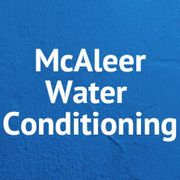What Are the Differences Between Water Purification & Filtration?

Purifying and filtering your drinking water are two common ways to improve the quality and health of the supply. While both are effective ways to remove contaminants, each one uses specific equipment. Choosing the best method for your needs depends on the available space in your home and the contaminants that you are trying to remove. Below is a brief overview about both choices so that you can find the perfect fit for your family.
Water Purification
One method of water purification is reverse osmosis. Reverse osmosis features a semi-permeable membrane that uses a filter to capture particles. Only water molecules can pass through this screen, as the holes are microscopic. This is an effective method for removing solids and nitrates that might be present in your drinking water, especially if you have a private water well. It can also improve the taste of your drinking water.

Water Filtration
A whole-house water filtration system is another option to clean the water. First, a sediment pre-filter sits at the point of entry to the home, removing solid materials to prevent rust and corrosion.
The final section contains an activated carbon filter, which pulls herbicides, pesticides, and other harmful chemicals from the water. Single location filters are available for individual faucets. They attach directly to your fixtures and clean the water as it passes through.
If you want to install a water purification or filtration system, contact McAleer Water Conditioning Inc. in Anamosa, IA. They have over 40 years of experience providing water treatment services to residents and businesses throughout Jones, Linn, Dubuque, Delaware, and Jackson counties. With an A+ rating from the Better Business Bureau®, these professionals can help you achieve high-quality drinking water. Call (800) 397-1995 to schedule an appointment, and visit the website for additional information about their products.
About the Business
Have a question? Ask the experts!
Send your question

